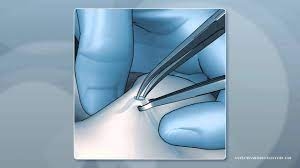
No-Scalpel Vasectomy (NSV) is a modern, minimally invasive method of male sterilization that has gained increasing popularity over the past few decades. It is a simple and safe procedure that offers men an effective, permanent form of birth control without the need for general anesthesia or incisions. In this article, we will discuss what NSV is, how it works, and its advantages and disadvantages.
What is No-Scalpel Vasectomy?
No-Scalpel Vasectomy NSV is a surgical procedure that involves blocking or cutting the vas deferens, the tubes that carry sperm from the testicles to the urethra. Unlike traditional vasectomy, which requires a scalpel to make an incision in the scrotum, NSV uses a special instrument to create a tiny puncture hole, through which the vas deferens is accessed and manipulated. The procedure is typically performed under local anesthesia and takes only about 15 to 30 minutes.
Advantages of No-Scalpel Vasectomy:
Quick and Easy Procedure: NSV is a relatively quick and straightforward procedure that can be performed in a doctor's office or clinic. The entire procedure takes only about 15 to 30 minutes, and most men can resume their normal activities within a day or two.
No Incisions: Unlike traditional vasectomy, which requires an incision in the scrotum, NSV uses a small puncture hole that does not require any stitches. This means there is less bleeding, swelling, and scarring.
Less Painful: NSV is generally less painful than traditional vasectomy because there is no cutting of the skin or muscle. The small puncture hole is made with a special instrument that spreads the tissue apart, rather than cutting it. The procedure is typically performed under local anesthesia, which numbs the area and reduces discomfort.
Fewer Complications: NSV has fewer complications than traditional vasectomy, such as bleeding, infection, and hematoma. The risk of long-term pain and discomfort is also reduced.
High Success Rate: NSV is an effective form of male sterilization, with a success rate of over 99%. After the procedure, men need to use another form of birth control until they have confirmed that their semen is free of sperm.
Disadvantages of No-Scalpel Vasectomy:
Irreversible: NSV is a permanent form of birth control and cannot be reversed with any guarantee of success.
Initial Cost: Although NSV may be less expensive than other forms of contraception in the long run, the initial cost may be higher than other methods.
No Immediate Protection: After NSV, men need to use another form of birth control until their semen is confirmed to be free of sperm, which can take up to three months.
Requires a Skilled Practitioner: NSV requires a skilled practitioner who has been trained in the technique, as it can be difficult to perform.
Conclusion:
No-Scalpel Vasectomy is a simple, safe, and effective form of male sterilization that offers men a permanent solution for birth control. It is a minimally invasive procedure that does not require general anesthesia or incisions, and has a high success rate. While NSV is irreversible, it offers men a long-term, low-maintenance form of birth control that is less expensive than other forms of contraception in the long run. However, it is important to choose a skilled practitioner who has been trained in the technique to minimize the risk of complications.
No-Scalpel Vasectomy How Its Work?
No-Scalpel Vasectomy (NSV) is a minimally invasive surgical procedure that involves blocking or cutting the vas deferens, the tubes that carry sperm from the testicles to the urethra. Unlike traditional vasectomy, which requires a scalpel to make an incision in the scrotum, NSV uses a special instrument to create a tiny puncture hole, through which the vas deferens is accessed and manipulated.
The procedure begins with the patient lying down on an examination table with his legs slightly apart. The doctor will then use a small, sharp instrument to make a puncture in the scrotum, which is typically described as feeling like a quick pinch. The instrument is specially designed to spread the tissue apart, rather than cutting it, which minimizes damage and reduces pain.

Once the puncture has been made, the doctor will use a pair of forceps to gently grasp the vas deferens and pull it through the hole. The vas deferens is then cut, tied, or sealed with a small metal clip or electrical current, depending on the method used by the doctor.
The same procedure is repeated on the other side of the scrotum, and then the puncture holes are left to heal on their own, without the need for stitches. The entire procedure usually takes about 15 to 30 minutes, and most men can go home the same day.
If you want to get amazing benefits by using this link
After the procedure, men need to use another form of birth control until they have confirmed that their semen is free of sperm, which can take up to three months. During this time, the patient will need to provide semen samples to their doctor, who will analyze them for the presence of sperm.
NSV is a safe and effective form of male sterilization that offers several advantages over traditional vasectomy, including faster recovery time, fewer complications, and less pain. However, it is important to choose a skilled practitioner who has been trained in the NSV technique to minimize the risk of complications.


